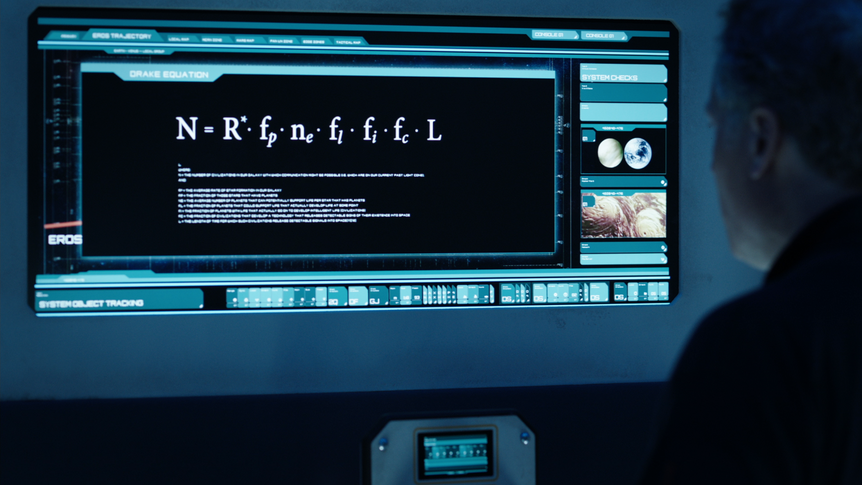The Expanse has been painstakingly crafted to be as scientifically accurate as possible, so we'd be doing the whole universe a disservice if we didn't call out all of the minutiae that make the show the most realistic look at the future we've ever seen. We sat down with Daniel Abraham, Mark Fergus, and Hawk Ostby, the co-creators and producers (Daniel is also 1/2 of the team that wrote the book series the show is based on) to get the lowdown on the insane level of detail and intricacy they put into the science we see in the show. But how real is it? Nerds, read on.
Q: In episode nine, what happens when someone returns to earth who was raised on another planet? Namely, when the Martians get off their ship, what’s going on?
DANIEL ABRAHAM: Mars is not an open air world. Most of the cities on Mars are underground to protect from radiation because theirs no magnetosphere. So, as with Belters, these are folks that have lived their whole lives without a horizon, without wide open spaces. When they have been outside, it’s been within the safety of a vac suit or a ship, or something that’s actually giving them air.
DANIEL ABRAHAM: So, when you put them into a situation where there’s a tremendous open air and there’s no support around them there’s some agoraphobia that comes in. That’s a very new environment. It’s a very new thing.
HAWK OSTBY: Unlike most Belters, they’ve trained for that eventuality, but still, to actually experience it, I think it’s cool to show. They’re all ready for it and one guy collapses. Man up, you’re a soldier, but the idea of training for 1 G when you’re used to…
DANIEL ABRAHAM: One-third.
MARK FERGUS: It’s sensory overload. The sun. Air. Sound. Imagine the sound of the city, if you've never heard anything like it.
DANIEL ABRAHAM: Imagine living your whole life in a protective shell and then stepping out into an unshielded nuclear reaction. That's fucked up. Why would you do that? That's terrible! Don't do it! [LAUGHS]
MARK FERGUS: That’s the beauty of Bobbie going out there. You can talk about the gravity, but to understand it is something else. When you see the sky and the open air and there’s no way for them to orient. I think in the book it’s so beautifully described, how her first attempt to process the horizon goes. Not very well.
MARK FERGUS: And that became the basis for all these scenes with the Martians trying to deal with how to walk out of the ship, even 50 feet to get to that building.
Q: The scene on the Arboghast where they discuss the Drake equation. What is that equation and how is it relevant to what they are doing?
DANIEL ABRAHAM: The Drake Equation is a big think piece when it comes to whether there is other life in the universe. It's the framework where you lie out all of the different variables into a single equation that would affect our ability to find alien life. As a tool to frame it, it's really useful. It's really interesting, and the-the different variables in there like, how many stars have habitable planets? How many planets support intelligent life? How long does intelligent life survive? How long within that is it capable of, creating radio waves or reaching out. And, we don't know the answers to any of those to within any certainty at all, so it looks good on paper but the actual values to plug into it are, things we're still very much in the early days of finding out.
Catch up on The Expanse here.


















